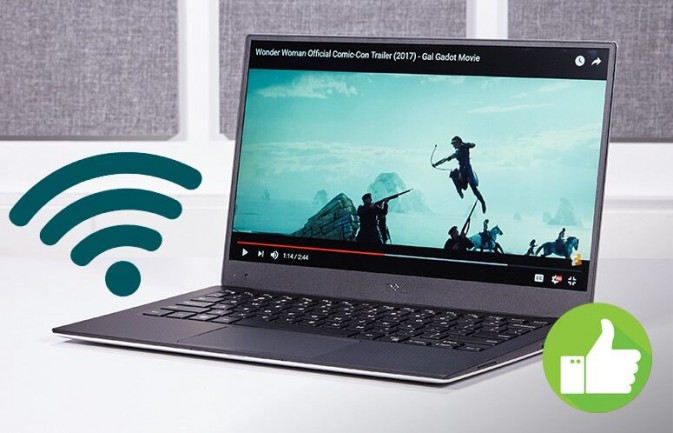6 Reasons to Buy the Dell XPS 13, and 2 Reasons to Skip
The Dell XPS 13 is our favorite overall laptop, but is it right for you? This sleek ultraportable boasts a screen with almost zero bezel, your choice of touch and non-touch displays, Intel 7th-generation Kaby Lake processing power and two color options. It also starts at a very reasonable $799.
Here’s a quick look at the pros and cons of the XPS 13 so you can decide whether to buy it or skip it.

Infinity Edge display
Long before the Galaxy S8 gained attention for its Infinity display, Dell introduced an edge-to-edge Infinity Edge display on the XPS 13. The result is a laptop that gives you the viewing area of a 13-inch system in a chassis that’s as compact as some 11-inch models. You can take your pick between two Infinity Edge displays. The non-touch, 1080p screen has a matte finish that helps cut down on glare, while the sharper quad-HD panel offers both touch capability and a sharper 3200 x 1800-pixel resolution. The quad-HD panel is also more colorful, but you should expect less battery life from that version. MORE: The Highest-Resolution Laptops We've Tested

Very long battery life
While other ultraportable laptops make due with 8 hours or less of endurance, the XPS 13 lasted an epic 13 hours and 49 minutes on the Laptop Mag Battery Test, which involves continuous web surfing over Wi-Fi. That was for the non-touch-screen version of the laptop with 1080p resolution. The touch-screen model, which also has a higher-res 3200 x 1800-pixel panel, lasted a still-great 9 hours and 11 minutes.

Mmmm, carbon fiber
The keyboard on the XPS 13 is nice and clicky with a decent 1.2 mm of travel and springy feedback, but what truly makes the typing experience comfortable is the soft-touch carbon-fiber deck that surrounds the layout. It feels a lot better than hard aluminum. The carbon-fiber treatment extends to the bottom of the system, which makes this ultraportable a pleasure to carry.

All the ports you need
While other ultraportables sacrifice ports to thinness and make you carry dongles around to plug in your peripherals, the XPS 13 is fully stocked. There are two full-size USB 3.0 ports, along with a USB Type-C port with Thunderbolt 3 support. Plus, unlike many other skinny laptops these days, Dell includes an SD card reader (no, not the lame micro kind). Bonus: There’s a tiny button and LEDs on the left side so you can check the battery status without flipping the lid open.

Killer Wi-Fi performance (literally)
The XPS 13 standard comes with the Killer 1535 Wireless-AC card, and it made a huge difference in my daily use. When working from home in an upstairs bedroom, the Dell did a much better job than a 12-inch MacBook maintaining a connection with my Wi-Fi router downstairs. In other words, you may not need to invest in a wireless extender if you buy this laptop.
Sign up to receive The Snapshot, a free special dispatch from Laptop Mag, in your inbox.

Swift performance
We tested two versions of the XPS 13, one with a 7th-generation Kaby Lake Core i5 processor, and the other with a Core i7 chip. Both versions performed well, turning in Geekbench 4 scores in line with the competition. The XPS 13’s SSD is exceptionally swift, as it turned in a transfer rate of 339 megabytes per second. That beats the HP Spectre (299 MBbps) and smokes the Samsung Notebook 9 (212 MBps) and the Surface Laptop (110.6 MBps), though it trails the 12-inch MacBook’s 467 MBps. MORE: The Laptops with the Fastest Hard Drives: Guide

‘Nosecam’ is annoying
Someday Dell (or someone else) will figure out how to put a camera behind a display, but for now you’ll have to make due with a webcam that sits below the Infinity Edge screen on the XPS 13. This awkward position means that people will be staring at your chin and potentially up your nose during video chats. If you do a lot of Skype calls or videoconferencing, we recommend investing in a good external webcam.

Not as thin as competitors
While the XPS 13 is plenty light at 2.7 pounds (2.9 pounds for the touch-screen model), it’s a bit chunkier than some other ultraportables. It measures 0.33 to 0.6 inches thick, which is thicker than the 12-inch MacBook (0.5 inches) and the HP Spectre (0.41 inches). However, we’re willing to live with that trade-off in order to get more ports and longer battery life.

